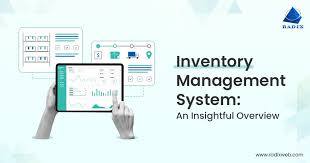Introduction
In the modern business landscape, the importance of effective inventory management cannot be overstated. Inventory plays a vital role in ensuring that businesses can meet customer demand, minimize operational costs, and maintain a smooth supply chain. Among the many facets of inventory management, business inventory ordering stands as a core pillar that determines the efficiency of a company’s operations. This comprehensive guide explores the concept of inventory ordering, its importance, various systems and strategies, challenges, technologies, and best practices to help businesses streamline their inventory processes and remain competitive in today’s marketplace.
1. Understanding Business Inventory Ordering
Inventory ordering refers to the process of replenishing stock to ensure a company has the right products in the right quantity at the right time. This process involves determining when to reorder products, how much to order, and from which supplier. The accuracy and efficiency of this process have a direct impact on customer satisfaction, cash flow, and profitability.
There are two primary types of inventory:
- Raw materials: Items used in the production of goods.
- Finished goods: Items ready for sale.
The inventory ordering process ensures that there is no understocking (leading to lost sales) or overstocking (leading to excess holding costs).
2. Importance of Efficient Inventory Ordering
Efficient inventory ordering is critical to business success for several reasons:
- Cost control: Helps reduce holding and storage costs.
- Demand fulfillment: Ensures customer demand is met without delays.
- Cash flow management: Prevents excessive capital from being tied up in unsold stock.
- Operational efficiency: Enhances supply chain and production continuity.
- Customer satisfaction: Ensures timely availability of products.
3. Key Inventory Ordering Methods
There are several popular inventory ordering methods used by businesses today:
a. Economic Order Quantity (EOQ) A formula-based approach that determines the optimal order quantity to minimize the total costs of ordering and holding inventory.
b. Just-In-Time (JIT) This method aims to receive goods only as they are needed in the production process, minimizing inventory levels and reducing storage costs.
c. Reorder Point System A system where a new order is placed when the inventory level reaches a predefined point, known as the reorder point.
d. ABC Analysis This method categorizes inventory into three classes:
- A: High-value items with low frequency.
- B: Moderate value and frequency.
- C: Low-value items with high frequency.
e. Vendor-Managed Inventory (VMI) In this method, the supplier is responsible for maintaining the inventory levels based on agreed parameters.
4. Inventory Ordering Process
An efficient inventory ordering process generally includes the following steps:
- Demand forecasting: Estimating future product demand based on historical data, market trends, and seasonal patterns.
- Inventory review: Monitoring current stock levels and identifying items that need replenishment.
- Reorder calculation: Using systems or formulas to determine the quantity to order.
- Supplier selection: Choosing the best supplier based on pricing, reliability, and delivery time.
- Purchase order creation: Formalizing the order through a purchase order document.
- Receiving goods: Inspecting and verifying delivered items.
- Stock update: Updating inventory records in the system.

5. Inventory Management Systems
Modern businesses use inventory management software to automate and optimize the ordering process. Some of the most popular systems include:
- SAP Inventory Management
- Oracle NetSuite
- Zoho Inventory
- QuickBooks Commerce
- TradeGecko
- Fishbowl Inventory
These systems help track inventory in real-time, automate reordering, generate reports, and integrate with other business systems such as CRM and accounting platforms.
6. Technology in Inventory Ordering
Advancements in technology have transformed the way businesses manage inventory ordering:
- Barcoding and RFID: Enable accurate tracking of inventory movement.
- IoT devices: Provide real-time monitoring of stock levels and storage conditions.
- AI and machine learning: Enhance demand forecasting and identify ordering patterns.
- Cloud computing: Enables real-time collaboration and access to inventory data from any location.
- Mobile apps: Facilitate on-the-go inventory checks and ordering.
7. Common Challenges in Inventory Ordering
Despite the benefits, businesses often face several challenges:
- Inaccurate demand forecasting
- Supplier delays
- Inventory theft or loss
- System integration issues
- Data inaccuracy
- Cash flow limitations
Overcoming these challenges requires a combination of robust systems, skilled personnel, and strategic planning.
8. Best Practices for Inventory Ordering
To optimize the inventory ordering process, businesses should adopt the following best practices:
- Regular audits: Conduct periodic inventory audits to ensure data accuracy.
- Diversified suppliers: Reduce dependency on a single supplier.
- Safety stock levels: Maintain buffer stock to avoid stockouts.
- Employee training: Ensure staff are trained in inventory management tools and processes.
- Review lead times: Work with suppliers to reduce delivery times.
- Use data analytics: Leverage historical and real-time data to make informed decisions.
- Integrate systems: Ensure seamless integration between inventory, sales, and accounting systems.
9. Industry-Specific Inventory Ordering Considerations
Different industries have unique inventory ordering needs. Here are a few examples:
- Retail: Requires rapid turnover and seasonal inventory planning.
- Manufacturing: Needs tight coordination with production schedules.
- Healthcare: Involves strict compliance with expiry dates and regulations.
- Food and Beverage: Must consider perishability and demand spikes.
- E-commerce: Demands real-time tracking and quick fulfillment.
10. Future Trends in Inventory Ordering
The future of inventory ordering is shaped by emerging trends and innovations:
- Automation and robotics: For warehousing and order picking.
- Blockchain: Enhancing supply chain transparency and traceability.
- Sustainability initiatives: Promoting environmentally conscious ordering practices.
- Predictive analytics: For advanced demand forecasting.
- Omnichannel integration: Ensuring consistency across sales platforms.
Conclusion
Business inventory ordering is a fundamental process that affects every aspect of a company’s operations, from supply chain efficiency to customer satisfaction. By implementing the right systems, leveraging technology, and following best practices, businesses can significantly enhance their inventory processes. As markets evolve and consumer expectations rise, the ability to manage inventory ordering effectively will continue to be a key differentiator for successful businesses. Whether a small retailer or a large manufacturer, mastering inventory ordering is essential for sustainable growth and profitability.
